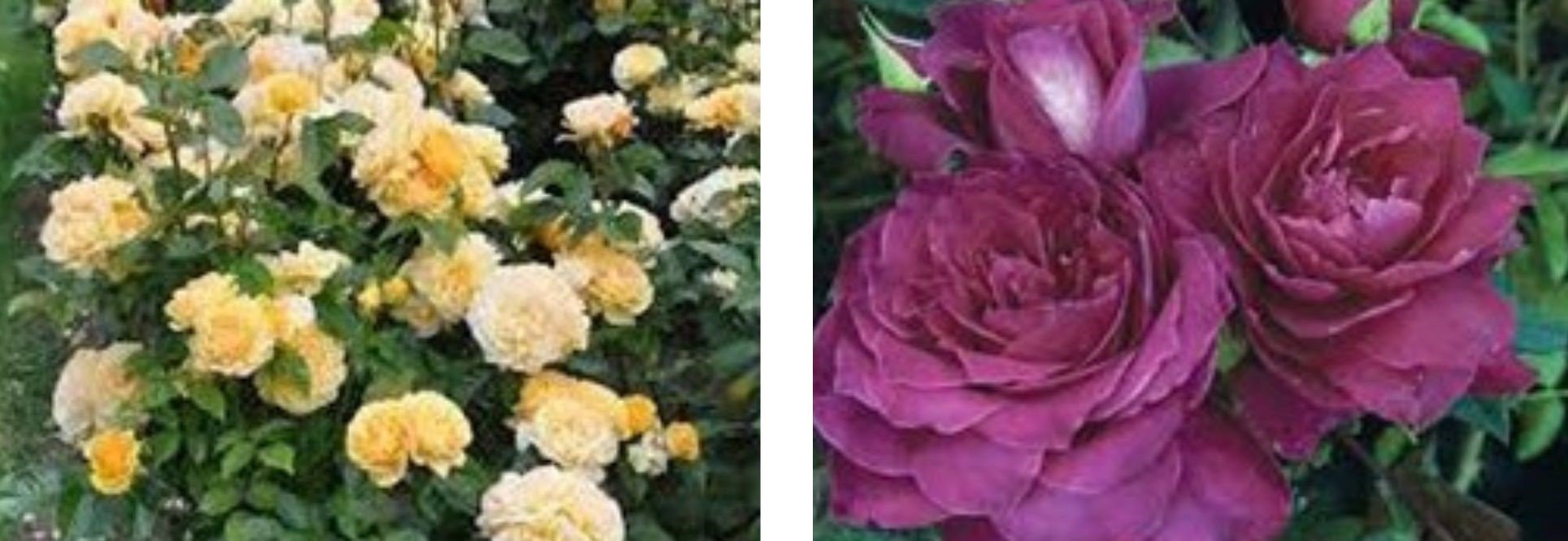Tips for Growing Roses in the Inland Northwest
From Elaine Christen
Which roses are best for our region and why? Roses grown on their own roots are best for colder areas like ours. When you are shopping for roses, look for roses that are labeled ‘on root.’ Even in our colder winters, they can regrow from the root stock and be true to form when they bloom again!
What happened to my roses this past winter? It seems as if all of us suffered losses in our gardens this past winter, due to the sudden onset of freeze after a very warm fall. Roses particularly took a beating. Whether they were newly planted, or old established specimens, many roses didn’t survive. If you are seeing no signs of life on your rose this late in the year, it is safe to assume it is lost.
What is the best way to fertilize and treat roses for bugs and fungus? Prevention is always best, and this is achieved by proper pruning and spacing of roses, planting them to allow for good air circulation. The more modern shrub bushes are actually bred to be more resistant to disease. Aphids are common on roses, and they can be controlled with lady bugs or insecticidal soap.
What would be considered ideal soil for roses? Roses, along with most plants and flowers, like fertile, well drained soil, with plenty of organic material added.
What is the best way to plant a rose? Start by digging a hole that is twice as wide as the pot it came in. If it is a grafted rose, plant the rose so the graft is 1” below the soil. Create a berm surrounding the root ball of the rose, which will help with water retention.
Speaking of watering, what’s the best way to water a rose? Drip irrigation is always the best, but if you can’t use a drip system, then hand watering is second best. With the berm around the rose that you created when planting it, it will help the root zone to retain water. Be sure to water enough so that the entire root ball is fully soaked. Then, allow the top 2 inches of soil to dry before the next watering. Avoid allowing sprinklers to hit the roses, as this can spread disease.
What does the term ‘deadheading’ mean? The first thing I think of is the Grateful Dead. But seriously, deadheading is simply removing the faded blooms from the plant to encourage growth and reblooming. To do this, look down the stem of the faded rose, and find the first 5-7 leaflet leaf that faces toward the outside of the bush. Prune to just above that leaf. Remember, the better cuts you make the stronger the regrowth!
How long do roses bloom in the Inland Northwest? Rose bloom time varies by season, of course, but generally, you will start to see blooms in mid June, and continuing to the first frost.
How should I prepare my roses for winter? Place a goodly amount of compost around the base of the rose. Cut the rose back to approximately 18-24” tall. Make a ‘haystack’ of pine needles or shredded bark to cover the majority of the stems. This will insulate the canes and protect the plant during the winter season.
And once winter is finally behind us, when should I consider pruning in the Spring? Usually in early March, you can pull away the pine needles and mulch and inspect for buds. If any canes are blackened, cut them back to live wood.
What type of food is best for roses? We suggest GB Rose and Flower Food, which we carry in the barn at New Leaf Nursery. The packaging will direct you on how to use the product.
Do you have rose pruners at the nursery? Yes, we do.
How about deer? Do they like roses? Deer have been known to eat them even with all those thorns! As we know, they will eat just about anything if they are hungry enough. Rugosa roses appear to be more resistant due to their extra thorniness and more rough textured leaves. We do carry a spray called Deer Out at the nursery, that our customers tell us work very well.
When is the best time of year to buy and plant roses? We have our roses available for sale when we open in March, and this is a good time to get dibs on your favorites. Unless you have a heated greenhouse, we ask that you leave them with us to keep them warm and cared for until mid-May after danger of frost has passed. We carry roses throughout the growing season, but if you are looking for a specific variety, or certain color, don’t wait too long. Everyone is out shopping early in the season. If there is a specific rose that you want, and you don’t see it at the nursery, ask one of our friendly staff about our ‘wish list’ and they will be happy to explain the process. It’s a great way to request a plant specific to your garden, and if our buyers can locate it, you will be notified when it arrives at our nursery!



























